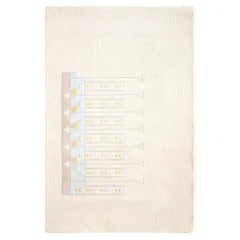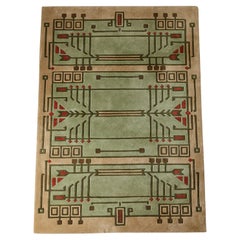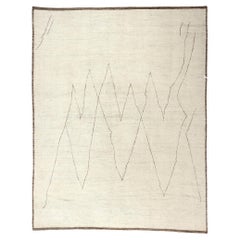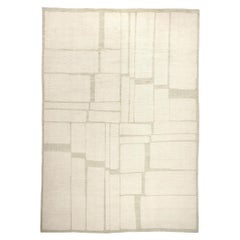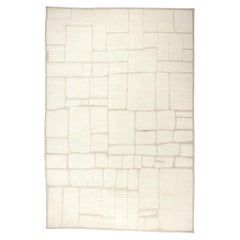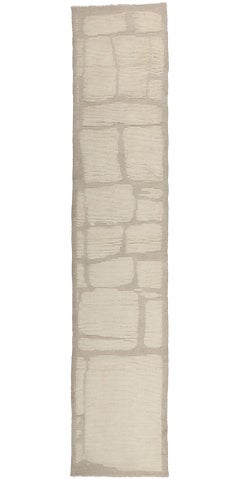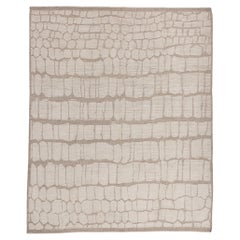Frank Lloyd Wright Rug
Late 20th Century American Prairie School North and South American Rugs
Wool
Vintage 1980s Modern North and South American Rugs
Wool
21st Century and Contemporary Indian Art Deco Western European Rugs
Wool
Vintage 1970s Chinese Chinese and East Asian Rugs
Wool, Silk
21st Century and Contemporary Pakistani Organic Modern Moroccan and Nort...
Wool
21st Century and Contemporary Pakistani Organic Modern Moroccan and Nort...
Wool
21st Century and Contemporary Pakistani Organic Modern Moroccan and Nort...
Wool
21st Century and Contemporary Pakistani Japonisme Moroccan and North Afr...
Wool
21st Century and Contemporary Pakistani Organic Modern Moroccan and Nort...
Wool
21st Century and Contemporary Pakistani Mid-Century Modern Moroccan and ...
Wool
21st Century and Contemporary Moroccan Mid-Century Modern Moroccan and N...
Wool
21st Century and Contemporary Moroccan Minimalist Moroccan and North Afr...
Wool
21st Century and Contemporary Moroccan Mid-Century Modern Moroccan and N...
Wool
21st Century and Contemporary Moroccan Minimalist Moroccan and North Afr...
Wool
Early 2000s Nepalese Japonisme North and South American Rugs
Wool, Silk
Early 2000s Nepalese Art Deco North and South American Rugs
Wool, Silk
Early 2000s Nepalese Art Deco North and South American Rugs
Wool, Silk
Early 2000s Nepalese Japonisme North and South American Rugs
Silk, Wool
Early 2000s Nepalese Japonisme North and South American Rugs
Wool, Silk
Early 2000s American Post-Modern North and South American Rugs
Wool, Silk
Late 20th Century Nepalese Mid-Century Modern More Carpets
Wool
21st Century and Contemporary American More Carpets
Vintage 1970s American North and South American Rugs
Vintage 1970s American More Carpets
Mid-20th Century Turkish Prairie School Turkish Rugs
Wool
21st Century and Contemporary Pakistani Mid-Century Modern Moroccan and ...
Wool
21st Century and Contemporary Moroccan Bauhaus Moroccan and North Africa...
Wool
Vintage 1960s Moroccan Mid-Century Modern Moroccan and North African Rugs
Wool
Late 20th Century Nepalese Mid-Century Modern Chinese and East Asian Rugs
Wool
Late 20th Century American Mid-Century Modern More Carpets
Vintage 1960s American Mid-Century Modern North and South American Rugs
Wool, Silk
Early 20th Century American American Craftsman North and South American ...
Vintage 1970s More Carpets
Vintage 1960s Moroccan Mid-Century Modern Moroccan and North African Rugs
Wool
Vintage 1960s English Furniture
Wool
Vintage 1970s American More Carpets
Vintage 1960s American More Carpets
Late 20th Century Nepalese Western European Rugs
Wool
Frank Lloyd Wright Rug For Sale on 1stDibs
How Much is a Frank Lloyd Wright Rug?
Finding the Right Rugs-carpets for You
Good antique rugs and vintage rugs have made their way into homes across the globe, becoming fixtures used for comfort, prayer and self-expression, so choosing the right area rug is officially a universal endeavor.
In modern usage, “carpet” typically denotes a wall-to-wall floor cushioning that is fixed to the floor. Rugs, on the other hand, are designed to cover a specific area and can easily be moved to new locations. However, the terms are interchangeable in many parts of the world, and, in the end, it won’t matter what you decide to call it.
It’s well known that a timeless Persian rug or vintage Turkish rug can warm any interior, but there are lots of other styles of antique rugs to choose from when you're endeavoring to introduce fresh colors and textures to a bedroom or living room.
Moroccan Berber rugs are not all about pattern. In fact, some of the most striking examples are nearly monochrome. But what these rugs lack in complexity, they make up for in brilliant color and subtle variation. Moroccan-style interiors can be mesmerizing — a sitting room of this type might feature a Moroccan rug, carved wooden screens and a tapestry hung behind the sofa.
Handwoven kilim rugs, known for their wealth of rich colors and unique weaving tradition, are pileless: Whereas the Beni Ourain rugs of Morocco can be described as dense with a thick surface or pile, an authentic kilim rug is thin and flat. (The term “kilim” is Turkish in origin, but this type of textile artistry is practiced all across the Balkans, throughout the Arab world and elsewhere.)
When it comes to eye-catching floor coverings, the distinctive “medallion” pattern of Oushak rugs has two types of rounded shapes alternating against a rich red or blue background created with natural dyes, while the elaborate “star” pattern involves large eight-pointed shapes in diagonal rows alternating with diamonds.
If you’re looking for something unexpected, find a runner rug that pops in your hallway or on your stairs. Dig for dazzling geometric patterns in our inventory of mid-century modern rugs and carpets, which includes works designed by the likes of Swedish textile masters Märta Måås-Fjetterström, Marianne Richter and other artisans.
Carpets and rugs have been around for thousands of years. Prehistoric humans turned to animal skin, wool and fur to craft simple fabrics to soften hard terrain. A 2016 study suggests that "cave lions" were hunted for exactly this purpose, and that decorating your cave with their pelts may have conferred strength and prestige. Although many of these early textiles are still in existence, tracing their precise origins is difficult. Carpets quickly became such a valuable trade commodity that the weavings could easily travel far from their places of origin.
The oldest known carpet was found in southern Siberia. (It may have traveled there from Persepolis in Iran.) For the flat-weave floor rugs crafted by Native Americans, cotton was the primary material before sheep’s wool was introduced in the 16th century. In Europe, carpet-making was fundamental to folk art, and Asian carpets imported to European countries were at one time considered a precious luxury and not intended to remain permanently on the floor.
With the variety of area rugs and carpets rolled out for you on 1stDibs — a collection that includes traditional, modern, minimalist rugs and other coverings of all kinds — things will be looking up whenever you’re looking down.
- 1stDibs ExpertFebruary 1, 2024The style of Frank Lloyd Wright’s work is Prairie style. The architect pioneered the style, which draws inspiration from the natural beauty of the landscapes of the Midwest region of the U.S. Wright's design philosophy emphasized organic architecture, with buildings existing in harmony with their natural surroundings. His approach to architectural design had a profound influence on the shape of modern life, both while he was actively designing buildings and during the decades that followed. Shop a diverse assortment of Frank Lloyd Wright furniture on 1stDibs.
- 1stDibs ExpertApril 5, 2022Frank Lloyd Wright broke away from Victorian-era architecture and created “Prairie-Style” out of the belief that there should be fewer, larger rooms that flowed easily. He was also a key player in the Art Deco movement. Shop a collection of expertly vetted Frank Lloyd Wright pieces from some of the world’s top sellers on 1stDibs.
- 1stDibs ExpertFebruary 27, 2024Frank Lloyd Wright used a variety of materials. For his homes and commercial buildings, the American architect favored natural materials and obtained them from local sources whenever possible. Some materials commonly featured in Wright's buildings include concrete, zinc, glass bricks, stone and wood. Wright’s wooden chairs and tables for his “Prairie Houses” of the early 1900s have sleek, attenuated forms, influenced by both the simplicity of traditional Japanese design and the work of Gustav Stickley and other designers of the Arts and Crafts movement. His desks and chairs for Johnson Wax have a streamlined look and feature tubular steel. Shop a variety of Frank Lloyd Wright furniture on 1stDibs.
- 1stDibs ExpertFebruary 27, 2024Frank Lloyd Wright's most famous house is arguably in Mill Run, a small community located in the Laurel Highlands region of southwestern Pennsylvania. Wright designed the home, called Fallingwater, in 1935 for the Kaufman family, who founded and owned a department store chain. Located around 70 miles southeast of Pittsburgh, the home is now open for daily tours. Just 7 miles away from Fallingwater is a second Frank Lloyd Wright home, Kentuck Knob. Designed in 1954, it was formerly the home of the Hagan family, who were friends with the Kaufmans. Explore a range of Frank Lloyd Wright furniture on 1stDibs.
- 1stDibs ExpertMarch 22, 2022Yes, Frank Lloyd Wright designed furniture. He believed that the interior of a home should complement its exterior. As a result, he created unique pieces for many of the buildings he designed. Some of his most notable pieces include the Taliesin Group cabinet and the Allen table. Find a range of Frank Lloyd Wright furniture on 1stDibs.
- 1stDibs ExpertApril 5, 2022Yes, Frank Lloyd Wright made lamps. A stained-glass lamp he designed in the early 1900s was found at an antique shop in Chicago, abandoned during World War II. The lamp went on to break records at Christie’s auction, selling for over $700,000 in 1998. Shop a collection of expertly vetted Frank Lloyd Wright pieces from some of the world’s top sellers on 1stDibs.
- 1stDibs ExpertApril 5, 2022Frank Lloyd Wright's architecture style was known as the Prairie Style; his principles led to a better life for all. From low-pitched roofs to overhanging eaves against closed-in Victorian era designs, prevalent in their confined spaces, among other things. Find vintage and modern Frank Lloyd Wright's pieces from top sellers on 1stDibs.
- 1stDibs ExpertApril 5, 2024There are four Frank Lloyd Wright houses in Pennsylvania. They include Fallingwater in Stewart Township, Kentuck Knob in Ohiopyle, Suntop Homes in Ardmore and the Don Duncan House in Acme. In addition, Wright designed the Francis Little House Library in Allentown and the Beth Sholom Synagogue in Elkins Park. On 1stDibs, explore a variety of Frank Lloyd Wright furniture.
- 1stDibs ExpertFebruary 27, 2024The style of furniture that Frank Lloyd Wright used varied. Wright's wooden chairs and tables for his “Prairie Houses” of the early 1900s have sleek, attenuated forms, influenced by both the simplicity of traditional Japanese design and the work of Gustav Stickley and other designers of the Arts and Crafts movement. For several residential projects, Wright designed severely geometric chairs that are marvels of reductivist design. For the Price Tower in Oklahoma, Wright designed angular wooden desks as well as upholstered pedestal chairs made of chromed steel that are more in line with the mid-century modern style. On 1stDibs, shop a range of Frank Lloyd Wright furniture.
- 1stDibs ExpertOctober 7, 2024The main difference between Frank Lloyd Wright and Le Corbusier is the architects’ philosophy. Frank Lloyd Wright helped pioneer organic architecture—buildings that coexist harmoniously with their natural surroundings. As a result, he often preferred to use natural and even local materials in his buildings and furniture. Le Corbusier was more progress-minded and sought to impose rational order on the world's chaos through design. He focused on designs for living in modern urban settings. In his furniture, he tended to blend natural and human-made materials, such as tubular chrome and genuine leather. On 1stDibs, shop a variety of Frank Lloyd Wright and Le Corbusier furniture.
- 1stDibs ExpertFebruary 27, 2024Frank Lloyd Wright designed more than 1,000 homes and other structures over the course of his life. However, only about 400 of those designs were ever built. Some of his most famous homes include Fallingwater, the Frederick C. Robie House, the Hollyhock House, the Darwin D. Martin House and Taliesin. Explore a diverse assortment of Frank Lloyd Wright furniture on 1stDibs.
- 1stDibs ExpertJune 6, 2024Around 430 Frank Lloyd Wright buildings are left. The American architect designed thousands of buildings throughout his career, but only 511 of his works were ever built. Some of these were lost to natural disasters, while others were demolished by their owners. On 1stDibs, explore an assortment of Frank Lloyd Wright furniture.
- 1stDibs ExpertNovember 26, 2024The Robie House by Frank Lloyd Wright is called Prairie-style architecture because of its characteristics. Wright pioneered Prairie-style architecture by designing homes in the Midwest using inspiration from the prairie landscapes found in the region. The earthy colors and organic textures of the Robie House’s brick, stucco and wood materials bring to mind the color of the prairies, and its low-pitched roof, strong horizontal lines and elongated rectangular windows reflect the flatness of the terrain. Inside, the home features wide-open spaces that provide extended sight lines similar to how you can see far into the distance when gazing out across a flat prairie. Shop a collection of Frank Lloyd Wright furniture on 1stDibs.
Read More
Hechizoo’s Original Sin Rug Tempts with Shimmering Copper, Tin and Bronze
Embroidered with snakes, turtles, birds and vines, it celebrates a dazzling natural world before the arrival of Adam and Eve.
Splashy Blooms Bud and Wilt in Artist Santi Moix’s Floral Rug
The colorful design captures the natural splendor of a backyard garden.
In South Africa, Rich Mnisi Is Taking Biomorphic Design to the Next Level
The rising fashion star is having his first solo show of furniture designs, at Southern Guild in Cape Town, and his far-out, snaking forms are like nothing you've ever seen.
The Artists and Designers behind Today’s Coolest Rug Collaborations
Top carpet companies are expanding the arena of artful floor coverings, seeking out creatives from other media and marrying their talents to textiles.
Tantuvi’s New Rugs Were Inspired by the Travertine Quarries of India and the Spanish Steps of Rome
The New York–based rug designers employ earthy colors and time-honored artistry in their creations.
We’re Going Gaga for the New Sasha Bikoff Rugs
The New York interior designer found inspiration in disco culture and astrology for her debut home collection.
Paradise Is Found Underfoot in These Majestic Persian Textiles
Persian garden carpets, with their timeless beauty and unmatched craftsmanship, have an enduring appeal.
12 Mesmerizing Moroccan-Style Interiors
With their rich layers, intricate patterns and elaborate lighting, rooms with a Moroccan influence are easy to spot.
